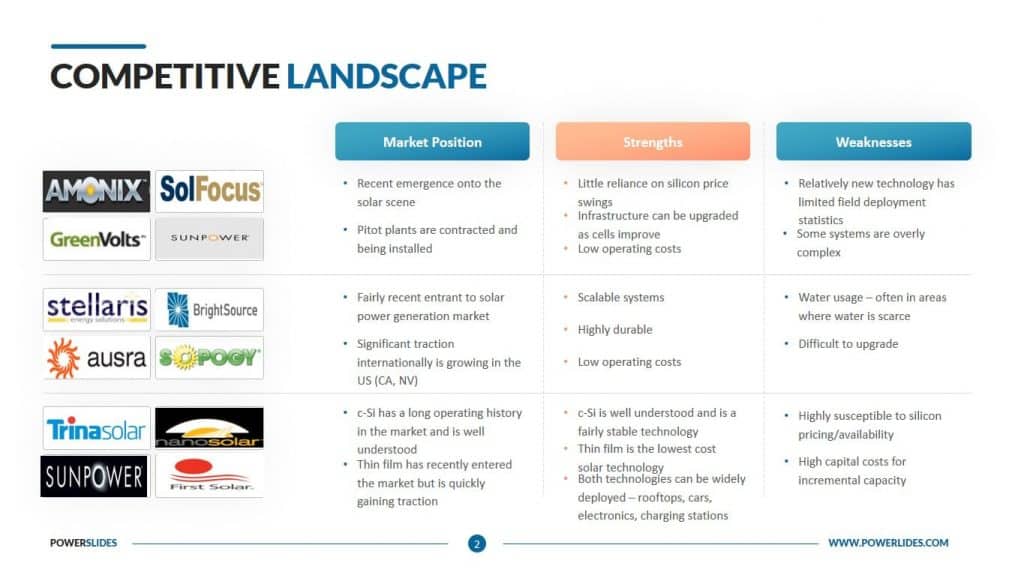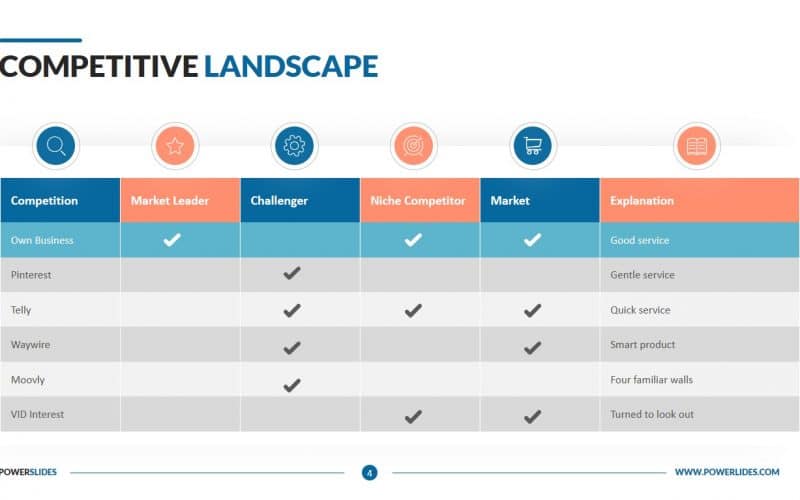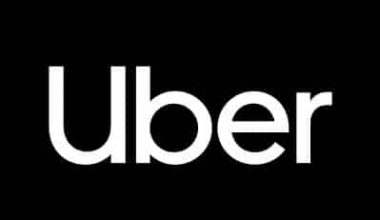The business world is unstable, and companies represent competition to others. However, every company wants to outperform its competitors but often doesn’t know-how. A competitive landscape analysis helps to establish a new mindset that supports the creation of strategic competitiveness. In this article, we will go through the competitive landscape example and the template. Also, we will discuss some of the tools to be used.

What is Competitive Landscape?
Competitive landscape is a business analysis tool that identifies competitors to help understand their vision, core values, target market, and SWOT. However, SWOT means strength, weakness, opportunities, and threats. Businesses are in competition, this analysis aids in establishing a new mindset that supports the creation of strategic competitiveness.
What Is Competitive Landscape in Market Research?
The process of defining, researching, and evaluating your competitors in order to gain insight that can be used to shape your business strategy is known as a competitive landscape analysis, and it is ongoing. It allows you to assess current and future rivals, as well as track their development.
Competitive Landscape Analysis
A competitive landscape analysis is a process of identifying and monitoring your competitor’s strategies to develop your business. However, it involves performing a thorough inquiry into how they’re conducting marketing, sales, and other vital operations. Also, it helps in developing counter-strategies based on accurate and reliable data.
Furthermore, a competitive landscape analysis should include five major issues:
Who your company’s competitors are
Not every company around you is your competitor. You should be able to identify who your competitions are by looking at your industry. Those companies offering the same product or service as you. Eventually, when you can identify them, then you can know how to win them.
Your competitors’ strengths and weaknesses
You should be able to identify your competitor’s strengths and weaknesses. After that, you would be able to link them with your organizational opportunities and threats. However, this can be done using your SWOT chart analysis.
The products and services your competitors offer
The product and service your competitors offer should not be better than the one you offer. You can’t have a larger market share if they offer better affordable products than your company.
The overall market outlook
You also need to study the outlook of your market. However, you need to know what your target market needs. Also, what product or services have the higher percentage in the market.
The strategies your competitors are using to achieve their objectives
To gain a higher market share in a competitive market, you need to identify strategies your competitors are using to gain their objectives. However, this will help in growing your strengths and reducing your weaknesses.
Furthermore, every business can gain from competitive landscape analysis, from the smallest startup companies to an industry’s big names. However, Learning what the competitor is doing to achieve its goal is a great way to achieve yours.
Having know that, let’s discuss some of the benefits of competitive landscape analysis.
How Do You Determine Competitive Landscape?
To identify promising openings, one must examine the competitive landscape by contrasting its products, market share, marketing techniques, prices, and growth projections with those of similar businesses.
Why Is Competitive Landscape Used?
A competitive landscape is a technique used in business analysis to pinpoint potential rivals, both near and far. It’s a tool for assessing a company’s strengths, flaws, market niche, and core values
Benefits of Competitive Landscape Analysis
First, it shows how you differ from your competitors and helps in better communicating those differences to customers.
Second, having done your analysis, you will be able to target marketing and sales to strengthen where you outperform your competition. Moreover, you can meet the demand of your target market when you’re aware of the perceived weaknesses of your competitors.
Finally, competitive landscape analysis gives the direction for where your business could go in the future. Also, it helps you know more about who your potential customers are and how you can do a better job of reaching them.
Competitive landscape example
Let’s use Businessyield Consult as an example to explain the competitive landscape analysis process. To begin, they would categorize all of their products and services. Obviously, they provide business consultation services, but they would also include business plans, article writing, and web designing.
After sorting their products into categories, Businessyield would identify major competitors in each category. And then research each company for price, target market, social media content, blogs. Finally, they would create a competitive matrix to extract the data into useful information.
With all of the information gathered, they would use strategically thinking for growth in their marketing, product offerings, social media interactions etc. However, they could also look for more partnerships to increase their market share.
Which Tool Best Measures the Competitive Landscape of a Particular Business?
There are several tools that best measure the competitive landscape of a particular business. However, it should be noted that these tools below are not in any form of rankings.
#1. Pi Datametrics
With Pi, you can estimate the impact of your brand, product lines, and your performance against competitors after any operations. You analyze rising trends and audience intent thereby influencing the message and the timings of campaigns to match consumer needs. This is how you can identify the “what” and the “when”
#2. SimilarWeb
It offers an overview of website traffic, referrals, search traffic and keywords, social media, display advertising, among others. However, prices are dependent on what you want from the service.
#3. Kompyte
Also, it provides Compare traffic, referrals, visitor behavior, keywords and search rankings, paid ads, and site by site social metrics. However, it stays updated with competitor emails. You can record competitors to track, or let Kompyte suggest them based on the keywords you are tracking. Nevertheless, prices start from $95/month, with a free 14-day trial.

Competitive Landscape Template
If you are still not sure of how to create a competitive landscape, here is a template of a competitive landscape. This competitive landscape is free and can be edited anytime.
Free Template competitive Landscape
Conclusion
In conclusion, every business needs competitive landscape analysis to know how to outperform their competitors. Also, they need to master their SWOT analysis. They need to increase their strength, reduce their weakness, find opportunities and avoid threats.
Competitive Landscape FAQ
How do you describe a competitive landscape?
Competitive landscape is a business analysis tool that identifies competitors to help understand their vision, core values, target market, and SWOT.
What is competitive landscape example?
Let’s use Businessyield Consult as an example to explain the competitive landscape analysis process. To begin, they would categorize all of their products and services. Obviously, they provide business consultation services, but they would also include business plans, article writing, and web designing.
- Competitor Analysis: All you need (+ How to Start Guide)
- How to choose a mentor
- Competitive Pricing: How to do Competitive Pricing Analysis
- Pricing Strategies: Top 7 Examples of Pricing Strategies
- SERVICE RECOVERY: Ultimate Guide to Service Recovery
- Sustainable Competitive Advantage: Simple Steps to Gain a Sustainable Competitive Advantage
- How to gain a competitive advantage






